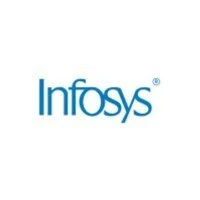


i
Infosys
Work with us
![]()
Filter interviews by
Infosys System Administrator Interview Questions and Answers
6 Interview questions
To check available physical volumes, volume groups, and logical volumes, you can use the 'pvdisplay', 'vgdisplay', and 'lvdisplay' commands.
Use 'pvdisplay' command to display information about physical volumes.
Use 'vgdisplay' command to display information about volume groups.
Use 'lvdisplay' command to display information about logical volumes.
These commands provide detailed information about the available physica...
Restarting a service stops and then starts it again, while reloading a service refreshes its configuration without stopping it.
Restarting a service completely stops it and then starts it again
Reloading a service refreshes its configuration without stopping it
Restarting a service is useful when there are critical changes or issues
Reloading a service is useful when only the configuration needs to be updated
To create a Repository file/YUM client Configuration, follow these steps:
Create a new repository file in the /etc/yum.repos.d/ directory
Specify the repository name, base URL, enabled status, and other options in the file
Save the file and exit the editor
Run 'yum clean all' command to clear the cache
Run 'yum repolist' command to verify the repository configuration
This process extends a logical volume and resizes the filesystem to utilize the new space.
#vgdisplay shows the volume group details, including free space available.
#lvextend -L +300M ktvg /dev/ktvg/ktlv2 increases the size of the logical volume by 300MB.
#lvdisplay confirms the new size of the logical volume after extension.
#resize2fs /dev/ktvg/ktlv2 resizes the filesystem to occupy the new space in the logical vol...
To extend LVM, follow these steps: 1. Create a new partition. 2. Initialize the partition as a physical volume. 3. Add the physical volume to the volume group. 4. Extend the logical volume. 5. Resize the file system.
Create a new partition using tools like fdisk or parted.
Initialize the partition as a physical volume using the pvcreate command.
Add the physical volume to the volume group using the vgextend command.
E...
To recover root password, boot into single-user mode and reset the password.
Reboot the system and press 'e' at the GRUB menu to edit the boot options.
Add 'single' or 'init=/bin/bash' to the end of the 'linux' line and press F10 to boot.
Run 'passwd' command to reset the root password.
Reboot the system and login with the new password.
Infosys System Administrator Interview Experiences
4 interviews found
Time and work , distance , percentage
BFS , TREE , STACK , QUEUE
(5 Questions)
- Q1. Be strong in basics
- Q2. How do you apply practical knowledge in your work?
- Ans.
I apply practical knowledge by troubleshooting issues, implementing solutions, and staying updated on new technologies.
Troubleshooting technical issues by analyzing logs and system performance
Implementing solutions based on best practices and previous experience
Staying updated on new technologies through training and certifications
- Q3. Goal Towards this job
- Q4. Short term and long term goals
- Q5. Why do we want to hire you
Interview Preparation Tips
(1 Question)
- Q1. Technical questions were asked regarding Windows Admin
Interview Questionnaire
6 Questions
- Q1. How to create a Repository file/YUM client Configuration?
- Ans.
To create a Repository file/YUM client Configuration, follow these steps:
Create a new repository file in the /etc/yum.repos.d/ directory
Specify the repository name, base URL, enabled status, and other options in the file
Save the file and exit the editor
Run 'yum clean all' command to clear the cache
Run 'yum repolist' command to verify the repository configuration
- Q2. What is the difference between Restart and Reload in Services?
- Ans.
Restarting a service stops and then starts it again, while reloading a service refreshes its configuration without stopping it.
Restarting a service completely stops it and then starts it again
Reloading a service refreshes its configuration without stopping it
Restarting a service is useful when there are critical changes or issues
Reloading a service is useful when only the configuration needs to be updated
- Q3. How to Recover the root password if its missed or deleted?
- Ans.
To recover root password, boot into single-user mode and reset the password.
Reboot the system and press 'e' at the GRUB menu to edit the boot options.
Add 'single' or 'init=/bin/bash' to the end of the 'linux' line and press F10 to boot.
Run 'passwd' command to reset the root password.
Reboot the system and login with the new password.
- Q4. How check available physical volumes, Volume groups and Logical Volumes?
- Ans.
To check available physical volumes, volume groups, and logical volumes, you can use the 'pvdisplay', 'vgdisplay', and 'lvdisplay' commands.
Use 'pvdisplay' command to display information about physical volumes.
Use 'vgdisplay' command to display information about volume groups.
Use 'lvdisplay' command to display information about logical volumes.
These commands provide detailed information about the available physical vol...
- Q5. Could you explain the steps ,how to extending LVM?
- Ans.
To extend LVM, follow these steps: 1. Create a new partition. 2. Initialize the partition as a physical volume. 3. Add the physical volume to the volume group. 4. Extend the logical volume. 5. Resize the file system.
Create a new partition using tools like fdisk or parted.
Initialize the partition as a physical volume using the pvcreate command.
Add the physical volume to the volume group using the vgextend command.
Extend...
- Q6. #vgdisplay, #lvextend -L +300M ktvg /dev/ktvg/ktlv2, # lvdisplay , #resize2fs /devktvg/ktlv2 then run #df -h command to verify space added
- Ans.
This process extends a logical volume and resizes the filesystem to utilize the new space.
#vgdisplay shows the volume group details, including free space available.
#lvextend -L +300M ktvg /dev/ktvg/ktlv2 increases the size of the logical volume by 300MB.
#lvdisplay confirms the new size of the logical volume after extension.
#resize2fs /dev/ktvg/ktlv2 resizes the filesystem to occupy the new space in the logical volume.
#...
Interview Preparation Tips
Skills evaluated in this interview
Interview Questionnaire
1 Question
- Q1. Sql join
What people are saying about Infosys






Interview questions from similar companies

I applied via Company Website and was interviewed before Mar 2020. There were 3 interview rounds.
Interview Questionnaire
2 Questions
- Q1. To write a code using traditional JavaScript methods
- Ans.
Code using traditional JavaScript methods
Use document.getElementById() to access HTML elements
Use loops like for() and while() for iteration
Use if() and switch() for conditional statements
Use functions to encapsulate code and improve reusability
- Q2. Also about complete react concepts of advanced version
Interview Preparation Tips

I applied via Campus Placement and was interviewed in Apr 2020. There were 4 interview rounds.
Interview Questionnaire
1 Question
- Q1. All technical discussion not much deeper but basic questions of graduation were asked
Interview Preparation Tips

I applied via Naukri.com and was interviewed before May 2020. There were 3 interview rounds.
Interview Questionnaire
1 Question
- Q1. Servicenow related questions
Interview Preparation Tips

I applied via Naukri.com and was interviewed in Aug 2020. There were 3 interview rounds.
Interview Questionnaire
1 Question
- Q1. Oops Concepts and Data Structure Questions.
Interview Preparation Tips

I applied via Campus Placement and was interviewed before Aug 2020. There were 4 interview rounds.
Interview Questionnaire
4 Questions
- Q1. What is collections
- Q2. What are the new features in java 8
- Q3. What is the use of spring boot
- Q4. What is JPA
- Ans.
JPA stands for Java Persistence API, a specification for object-relational mapping in Java applications.
JPA is used to map Java objects to relational database tables.
It provides a set of annotations to define the mapping between Java classes and database tables.
JPA also supports querying data using the Java Persistence Query Language (JPQL).
Interview Preparation Tips
Skills evaluated in this interview

Interview Questionnaire
1 Question
- Q1. About DBMS and c++
Infosys Interview FAQs
Tell us how to improve this page.
Infosys Interviews By Designations
- Infosys System Engineer Interview Questions
- Infosys Software Engineer Interview Questions
- Infosys Associate Consultant Interview Questions
- Infosys Technology Analyst Interview Questions
- Infosys Senior Systems Engineer Interview Questions
- Infosys Software Developer Interview Questions
- Infosys Business Analyst Interview Questions
- Infosys Senior Associate Consultant Interview Questions
- Show more
Interview Questions for Popular Designations
- Software Engineer Interview Questions
- Senior Engineer Interview Questions
- System Engineer Interview Questions
- Senior Associate Interview Questions
- Senior Analyst Interview Questions
- Linux Administrator Interview Questions
- Specialist Interview Questions
- Senior System Administrator Interview Questions
- Show more
Overall Interview Experience Rating
based on 4 interview experiences
Interview Questions from Similar Companies
Infosys System Administrator Reviews and Ratings
based on 26 reviews
Rating in categories
|
Technology Analyst
55k
salaries
| ₹4.8 L/yr - ₹10 L/yr |
|
Senior Systems Engineer
54.2k
salaries
| ₹2.5 L/yr - ₹6.3 L/yr |
|
Technical Lead
35.4k
salaries
| ₹9.5 L/yr - ₹16.5 L/yr |
|
System Engineer
32.7k
salaries
| ₹2.4 L/yr - ₹5.5 L/yr |
|
Senior Associate Consultant
31.1k
salaries
| ₹8.3 L/yr - ₹15 L/yr |

TCS

Wipro

Cognizant

Accenture
- Home >
- Interviews >
- Infosys Interview Questions









